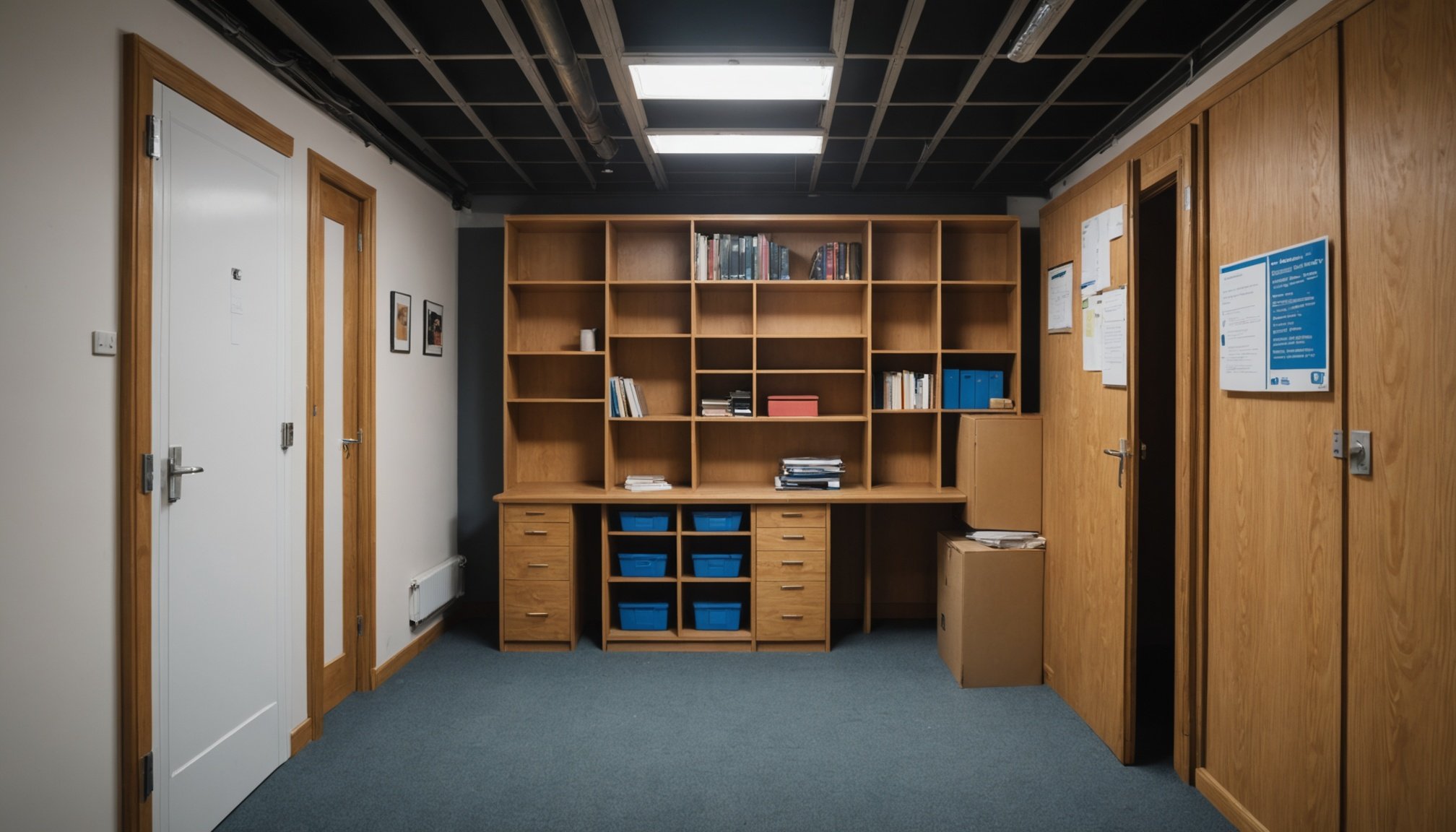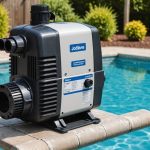Importance of Panic Rooms in UK Homes
Panic rooms have become essential in enhancing home security, offering residents a safe space during emergencies. In the UK, there’s a growing trend of panic rooms, spurred by increasing awareness of security and personal safety. These spaces serve as fortified sanctuaries, equipped with robust structural elements and advanced technology, directly improving the home security profile.
Panic rooms not only provide physical safety but also deliver significant psychological benefits. Knowing there’s a secure area can offer peace of mind, reducing anxiety about potential threats. This aspect is particularly important for families or individuals with past experiences of insecurity.
Also read : Essential Factors to Consider Before Relocating to a High-Security Area in the UK
Before relocating, consider the holistic impact of having a panic room. It influences decisions on relocation considerations, such as the choice of neighborhood and the overall security infrastructure of the property. With meticulous planning and integration, panic rooms enhance the resilience of a home against unforeseen incidents.
Moreover, investing in a panic room can be a selling point in the real estate market, as the demand for advanced security measures rises among homebuyers. Therefore, incorporating a panic room could potentially elevate your property’s appeal and home security status, fostering both immediate safety and long-term value.
Also read : Seamless transitions: expert strategies for managing multi-generational relocations in the uk
Insurance Implications
Incorporating a panic room into your home can affect your home insurance policy in several ways. While it enhances home security, potentially reducing premiums, insurers require a thorough evaluation of the panic room’s specifications. Key factors include the materials used, security system integration, and the room’s accessibility.
Insurance companies often assess liability issues related to misuse or accidents within the panic room. Therefore, homeowners should ensure that their panic room insurance encompasses these aspects. It’s also crucial to understand coverage options for potential damages or breaches, which could impact liability.
To secure an adequate insurance policy, conduct a detailed review with your insurer. Explain the panic room’s features and how it complements your overall home security strategy. Ensure the policy covers not only the room’s construction but also maintenance and technological updates. This protects from unforeseen scenarios and maintains a secure household environment.
Exploring different insurers is wise, as policies can vary significantly. Seek policies that reflect both the enhanced security a panic room offers and any additional risk factors, ensuring comprehensive coverage. Ultimately, aligning your home insurance with a well-integrated and secure panic room can provide peace of mind and maximize safety.
Design Considerations for Panic Rooms
In designing a panic room, safety and functionality are paramount. The room should feature interior safety elements such as reinforced walls and secure locks. Invest in high-quality materials like ballistic steel and fibreglass to ensure the room’s durability against attacks or disasters.
When considering panic room design, it is essential to balance security with comfort. Integrate communication tools and emergency kits, which combine practicality with peace of mind. Incorporating an independent ventilation system ensures that air quality is maintained, even if the rest of the house is compromised.
Customization options offer homeowners the flexibility to tailor the panic room to specific needs. This includes designing on a scale that suits the household size, from small hiding spaces to fully equipped rooms. Personal preferences might demand amenities like water supply or sanitation facilities.
Additionally, the location of the panic room within the residence matters. Ideally, it should be easily accessible to all family members, ensuring swift entry during emergencies. An effective panic room design requires thoughtful planning, marrying the integrity of home security with personal peace of mind. By considering these factors, you can create a space that not only protects but also reassures.
Local Regulations and Compliance
Ensuring compliance with building regulations is crucial when constructing a panic room. Homeowners in the UK must adhere to specific legal requirements that govern structural modifications to properties. Regulations cover aspects such as materials, structural integrity, and emergency egress points. Such guidelines are in place to ensure the safety of occupants and the functionality of the panic room in emergencies.
Obtaining necessary permits is a foundational step in the construction of a panic room. This process typically involves submitting detailed architectural plans to local authorities. These plans must demonstrate how the room integrates with existing property structures while meeting safety standards. Consult with architects who specialise in compliance to navigate this often complex approval process smoothly.
Addressing property modification issues proactively can prevent future legal challenges and ensure the panic room adds value to the property rather than complicating its sale. Regular inspections may be required to maintain compliance, especially if there are updates or alterations to the panic room over time. Engaging professionals familiar with local housing codes is essential. Emphasising compliance not only safeguards investment but also contributes to long-term peace of mind for homeowners.
Value Addition to Property
The addition of a panic room can significantly enhance a property’s value by meeting the rising demand for advanced home security features. In today’s market, homebuyers are increasingly interested in properties that offer enhanced security measures. This trend is influenced by growing concerns for personal safety and the desire for peace of mind.
Investing in panic room installations not only boosts the security profile but also increases the resale potential of a home. Potential buyers often view homes with these features as better investments, offering a safe and secure environment for their families.
When considering the property value, it’s crucial to evaluate current market trends. Homes with security improvements, including panic rooms, are more likely to attract attention in competitive markets. These additions can serve as a key differentiator, appealing to buyers prioritizing safety.
Additionally, highlighting the availability of a panic room during the sales process can address buyer concerns about neighborhood safety. A well-integrated panic room not only enhances immediate home security but also provides a compelling advantage in property transactions, promoting both long-term and immediate gains in a property’s financial worth.
Neighborhood Safety Statistics
The neighborhood safety is pivotal when considering adding a panic room. Before making such an investment, reviewing local crime statistics gives a necessary overview of potential threats in the area. Knowing how crime rates compare across different regions can help homeowners make informed decisions about enhancing their home security features.
Engage with community resources like local law enforcement or neighbourhood watch programs, which often provide up-to-date safety evaluations of neighbourhoods. These insights can guide homeowners on the most pertinent security measures to put in place, ensuring both peace of mind and physical safety.
Incorporating broader community safety features like street lighting, security patrols, and well-maintained public spaces can further fortify your home’s defenses. Such resources not only enhance your home’s safety but also cultivate a collective sense of security, which can deter criminal activities.
Ensuring that a panic room complements these external safety mechanisms allows homeowners to create a comprehensive security strategy. This approach doesn’t just protect the household in emergencies but also elevates home security in tandem with the neighbourhood’s wider security efforts, maximising the investment in a panic room.
Expert Tips on Assessing Homes
When considering a home with a panic room, evaluating key features is crucial for ensuring it meets your safety and investment requirements. Understanding what to look for can make the selection process smoother and more informed.
Engage with real estate experts to gain insights into property investments. They can guide you through assessing homes that feature integrated home security systems. It’s important to evaluate the panic room’s construction quality, ensuring reinforced materials are used to maximize safety and durability. This involves reviewing the room’s specifications, such as interior safety elements and its integration with the overall security framework.
Developing a checklist for home assessments can streamline the evaluation process. Include factors like the location of the panic room, the presence of security systems, and the room’s accessibility during emergencies. These criteria help ensure the space not only enhances home security but also suits your family’s needs.
Consulting with professionals can provide valuable advice, especially if you’re new to the concept of panic rooms. By doing so, you can identify potential red flags and verify the resale potential of your investment, aligning with the latest market trends.
Expert Tips on Assessing Homes
When considering homes with a panic room, conducting thorough home assessments is essential to gauge both safety and investment potential. Focus initially on panic room evaluation. Examine if the panic room integrates seamlessly with the home’s overall safety features. Check if it houses reinforced materials like ballistic steel, which is crucial for interior safety. This ensures the space can withstand threats effectively.
Developing a comprehensive checklist aids in these assessments. Key elements include the panic room’s location, ease of access during emergencies, and compatibility with existing security systems. Consider the presence of reliable security features like surveillance cameras and alarms, which enhance the residence’s overall safety profile.
Engage real estate experts to gain insights into properties with these features. Their expertise can inform decisions on whether the panic room and associated security features reflect current market trends. They can help identify potential issues and ensure resale potential aligns with the investment.
By utilizing this informed approach and leveraging professional advice, prospective buyers can make savvy decisions. This enables them to invest in homes with robust panic rooms that promise both home security and sustainable value.





